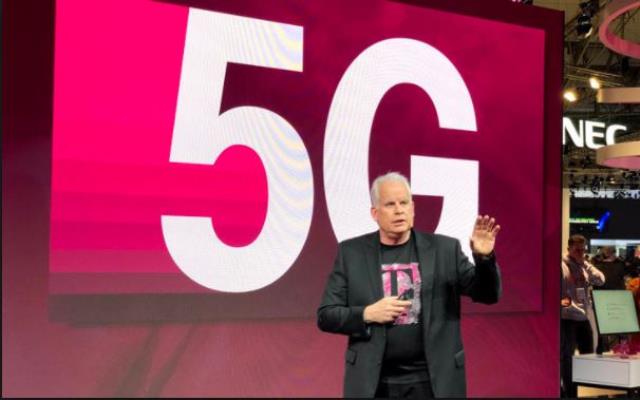Neville Ray, president of technology at T-Mobile, has explained how the telecom giant is accelerating its 5G network.
 Opensignal ranked the T-Mobile network first for 5G availability. T-Mobile customers get a 5G signal more often than customers on any other network – more than twice as compared with AT&T and 56 times more often than Verizon.
Opensignal ranked the T-Mobile network first for 5G availability. T-Mobile customers get a 5G signal more often than customers on any other network – more than twice as compared with AT&T and 56 times more often than Verizon.
Ookla measuring 4G and 5G from over one million customer devices shows that T-Mobile has 5G in nearly 4X more cities than Verizon and AT&T and 32X more cities than Verizon alone.
T-Mobile customers with a 5G-capable device experience faster overall download and upload speeds than Verizon customers.
T-Mobile’s 5G network covers more people in big cities and rural America. T-Mobile uses low-band 600 MHz spectrum. Verizon is betting on millimeter wave as the cornerstone of 5G.
“We recently completed the world’s farthest-ever 5G connection – 60 miles from the base station. We are lighting up 600 MHz 5G in Virginia Beach, Norfolk and Richmond, Va., Topeka, Kan., Sussex County, Del., and coming soon in Buffalo, N.Y.,” Neville Ray said in a blog.
The Deutsche Telekom subsidiary said its nationwide 5G network, which is also available to Sprint customers, covers nearly 6,000 cities and towns targeting 225 million people across over one million square miles.
“On August 2, we’re combining our Sprint and T-Mobile brands to operate as one T-Mobile brand nationwide,” said Mike Sievert, CEO of T-Mobile.
“Our team is also deploying mid-band 2.5 GHz spectrum from Sprint. This adds depth to our nationwide 5G network, increasing capacity and boosting speeds for customers. Mid-band 5G test shows download speeds over 300+ Mbps and peak speeds of 1200 Mbps,” Neville Ray said.
T-Mobile’s mid-band 5G is live in parts of Chicago, Houston and Los Angeles, following its earlier launch in Philadelphia and New York.
“We’re getting ready to light up standalone 5G this quarter. T-Mobile completed the world’s first standalone 5G data session on a multi-vendor radio and core network, and the first standalone 5G data session in North America. Standalone 5G will expand coverage and bring improved latency and faster uploads,” T-Mobile CTO said.
T-Mobile holds more low and mid-band spectrum than AT&T and Verizon combined. T-Mobile will be phasing out legacy technologies to free up even more spectrum nationwide for LTE and 5G.
T-Mobile began expanding home broadband pilot — starting in Grand Rapids, MI. Average NPS (net promoter scores – a measure of customer satisfaction) for T-Mobile Home Internet are 64 in the pilot phase versus –74 for legacy home ISP services.
T-Mobile plans to offer T-Mobile Home Internet in more than 50 percent of U.S. zip codes – many in rural areas where home broadband is too slow and expensive with abysmal customer service.





